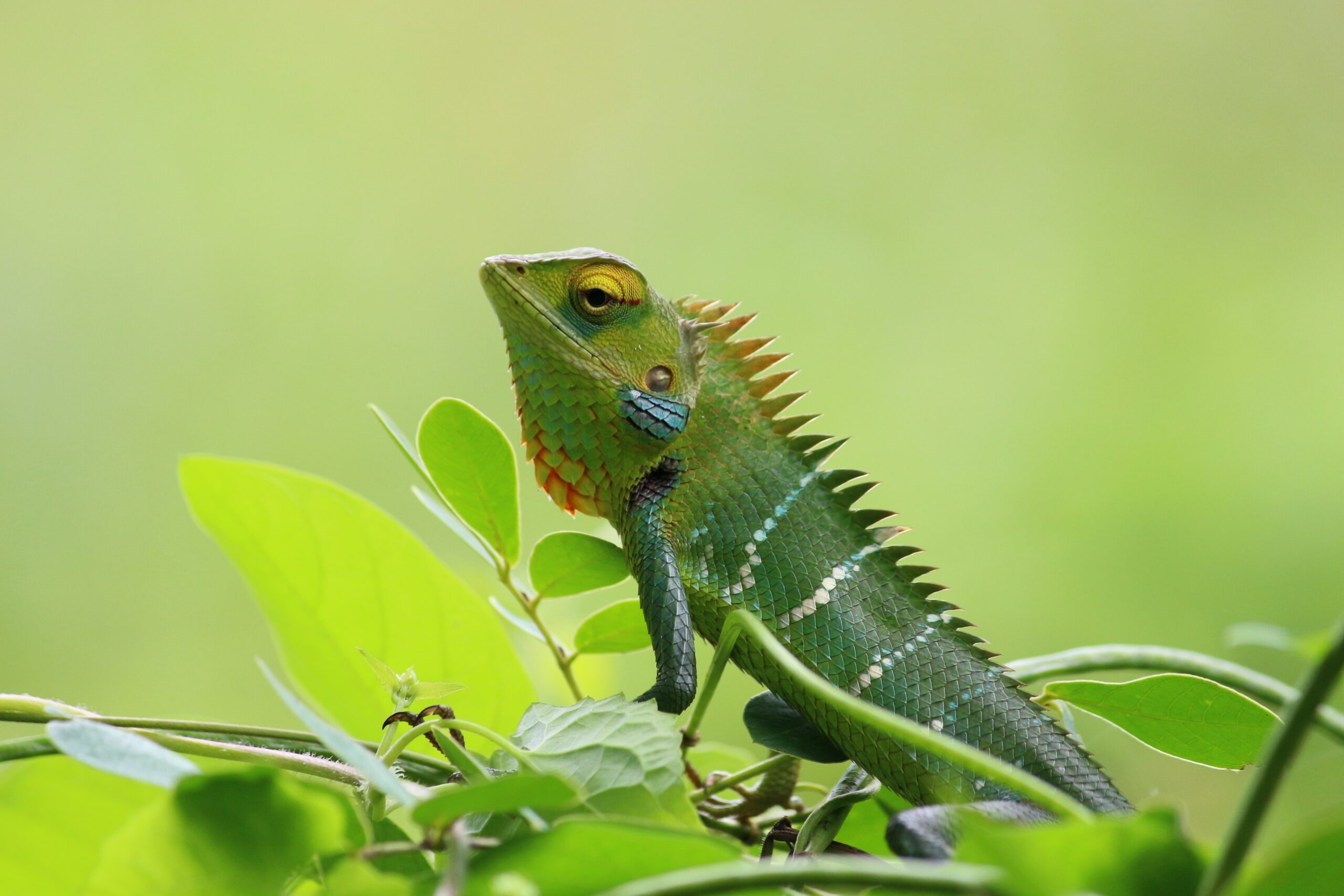Chameleons are among the most extraordinary reptiles on Earth, instantly recognizable for their unique ability to change color, rotate their eyes independently, and launch their tongues with lightning speed. Belonging to the family Chamaeleonidae, there are around 200 known species of chameleons, with the greatest concentration found on the island of Madagascar, which hosts nearly half of the world’s chameleon diversity. Other species inhabit mainland Africa, southern Europe, the Middle East, India, and Sri Lanka, while some have been introduced to places like Hawaii and Florida.
Chameleons are highly adapted to arboreal life. Most species live in trees and shrubs, using their zygodactylous feet—two toes facing forward and two backward—to grip branches with precision. Their prehensile tails act like a fifth limb, aiding in balance and movement. One of their most defining traits is their independent eye movement—each eye can rotate 180 degrees and operate separately, giving them a full 360-degree field of vision without moving their heads.
Perhaps the most famous chameleon characteristic is their color-changing skin. This isn’t just camouflage; it’s also a form of communication, used to signal mood, attract mates, or ward off rivals. Chameleons change color through the manipulation of specialized skin cells called iridophores, which contain nanocrystals that reflect light. Color changes can range from subtle earth tones to brilliant reds, blues, and greens depending on species and situation.
Among the most popular and widely recognized chameleons are the Veiled Chameleon (Chamaeleo calyptratus) from the Arabian Peninsula, known for its high casque (helmet-like structure) and tolerance to captivity; the Panther Chameleon (Furcifer pardalis) from Madagascar, admired for its vivid and varied coloration across regional locales; and the Jackson’s Chameleon (Trioceros jacksonii) from East Africa, notable for the males’ three horns reminiscent of a triceratops.
Despite their popularity, many chameleon species are in serious danger. Deforestation, habitat fragmentation, climate change, and the illegal pet trade are pushing several species toward extinction. The Belalanda Chameleon (Furcifer belalandaensis), found only in a small region of southwest Madagascar, is critically endangered due to severe habitat degradation. Similarly, the Namoroka Leaf Chameleon (Brookesia bonsi), one of the tiniest reptiles in the world, is on the brink of extinction, confined to a single forest in northwestern Madagascar.
The IUCN Red List classifies dozens of chameleon species as vulnerable, endangered, or critically endangered. The main conservation challenges include protecting forest habitats, enforcing wildlife trade regulations, and educating communities and consumers about the risks of removing chameleons from the wild. Responsible pet ownership, along with habitat restoration, is crucial to ensuring these creatures survive for future generations.
Chameleons are not only ecological treasures but also serve as indicators of environmental health. Their specialized needs and sensitivity to change make them early warning signs of ecosystem imbalance. Through research, conservation, and awareness, we can help preserve these magnificent reptiles and the rich biodiversity they represent.



































































